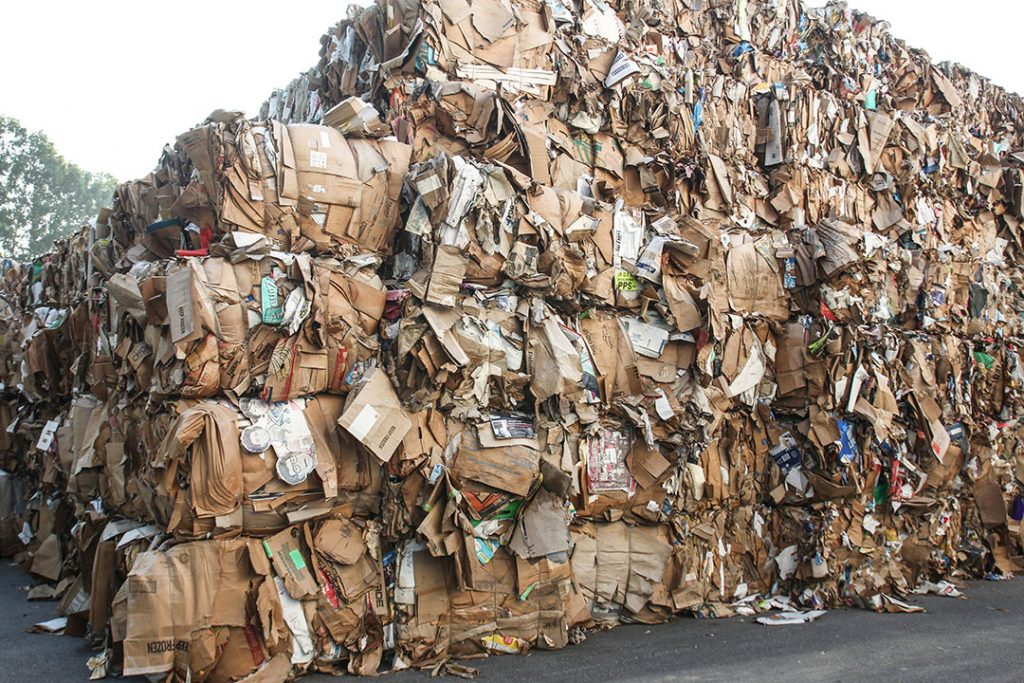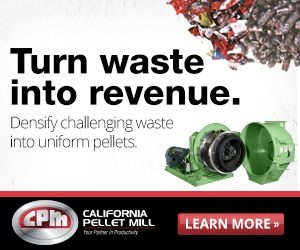
A 700,000-tons-per-year recycled pulp and paper operation is coming soon to Kentucky. | olephoto/Shutterstock
The past week brought several significant recycled paper capacity announcements, indicating future domestic outlets for mixed paper and OCC.
Shipping pulp from Kentucky to China
A Chinese company that purchased a U.S. paper mill will install a 700,000-tons-per-year recycled pulp and paper operation, taking in mixed paper and OCC and shipping the output to China for packaging production.
Shanying International a year ago purchased a shuttered pulp and paper mill in Wickliffe, Ky. At the time, the company announced plans to restart the facility, converting it from graphic paper to pulp and kraft packaging production. The Kentucky mill, operating under the name Phoenix Paper, reopened this year and began producing virgin pulp.
But this month, company officials said they will invest $200 million to install a paper recycling facility on the site. The development was highlighted in a press release from Kentucky Gov. Matt Bevin.
“With an estimated 700,000-ton annual capacity, the new facility will receive post-consumer cardboard and mixed paper from various regional locations,” according to the announcement. “Following cleaning and screening of the raw material, the stock will be formed and dried into industrial pulp and finished paper.”
The recycled fiber component of Shanying’s investment has been hinted at since the company acquired the shuttered mill. However, recovered fiber research firm RISI in May reported that the Chinese tariffs on recycled pulp imported from the U.S. caused Shanying to reconsider that component of the business.
The latest announcement did not mention the pulp tariff, but it did point out that this Chinese-U.S. partnership is flourishing “amid national-level tensions.”
The release from the governor’s office also framed the recycled paper investment in the context of the current recycling market challenges. The project “represents a creative, pro-business and environmentally sustainable example of an approach to the increasing problem of mixed paper and cardboard recycling piling up across the U.S.,” the announcement stated.
Construction is slated to begin this year, and Phoenix Paper anticipates the project will be completed in 14 to 18 months.
Moving from graphic to recycled packaging
Ohio-headquartered Verso Corporation, which operates six mills in the Midwest and Northeast, is undergoing a shift in the paper products it makes. The company is moving toward recycled paper packaging production.
In a call to discuss the company’s second-quarter financial results, interim CEO Les Lederer said graphic paper demand has been declining for years due to shift toward digital media. But he said demand has recently declined “at an increasing rate,” partially driven by other factors.
Graphic paper, which is used in printing and writing materials, makes up a majority of the material Verso produces. But Verso officials said the company is investing in recycled paper packaging production capacity to shift away from dependence on graphic paper markets. During the second quarter of 2019, the company approved a capital project that will add 48,000 tons per year of recycled packaging production capacity to its Duluth, Minn. mill. The project, scheduled to be completed in the first quarter of 2020, will replace a portion of graphic paper capacity at that facility.
“The mill has run trial products of these grades, and the customers have been very impressed with the products and are awaiting completion of the project,” Lederer said. “We are planning further conversions to recycle containerboard and recycle kraft to the Duluth Mill to mitigate the demand loss of the products currently produced at that mill.”
Coincidentally, Verso owned the Wickliffe, Ky. mill before Shanying purchased it. Verso closed that facility due to declining demand for the graphic papers the mill produced.
New recycled paperboard system – but no capacity increase
Mill operator Graphic Packaging will spend $600 million to install a recycled paperboard system. The project will have a capacity to produce 500,000 tons per year, but the company says the investment will be “capacity neutral.”
Graphic plans to phase out recycled paperboard production capacity at other facilities and shift it to the new system, which is more efficient and has lower costs, according to a company release.
With the new system, the company anticipates cost savings in part from “reduced raw material consumption,” according to the release, suggesting the new system will consume less recovered fiber to produce the same amount of product.
The company has not yet announced where the investment will take place but is looking at the Midwest, either in Michigan or Ohio.
More stories about fiber
- Graphic Packaging reports rising post-consumer content
- Packaging Corp. to buy Greif containerboard segment
- Fiber end users talk price increases, demand outlook



